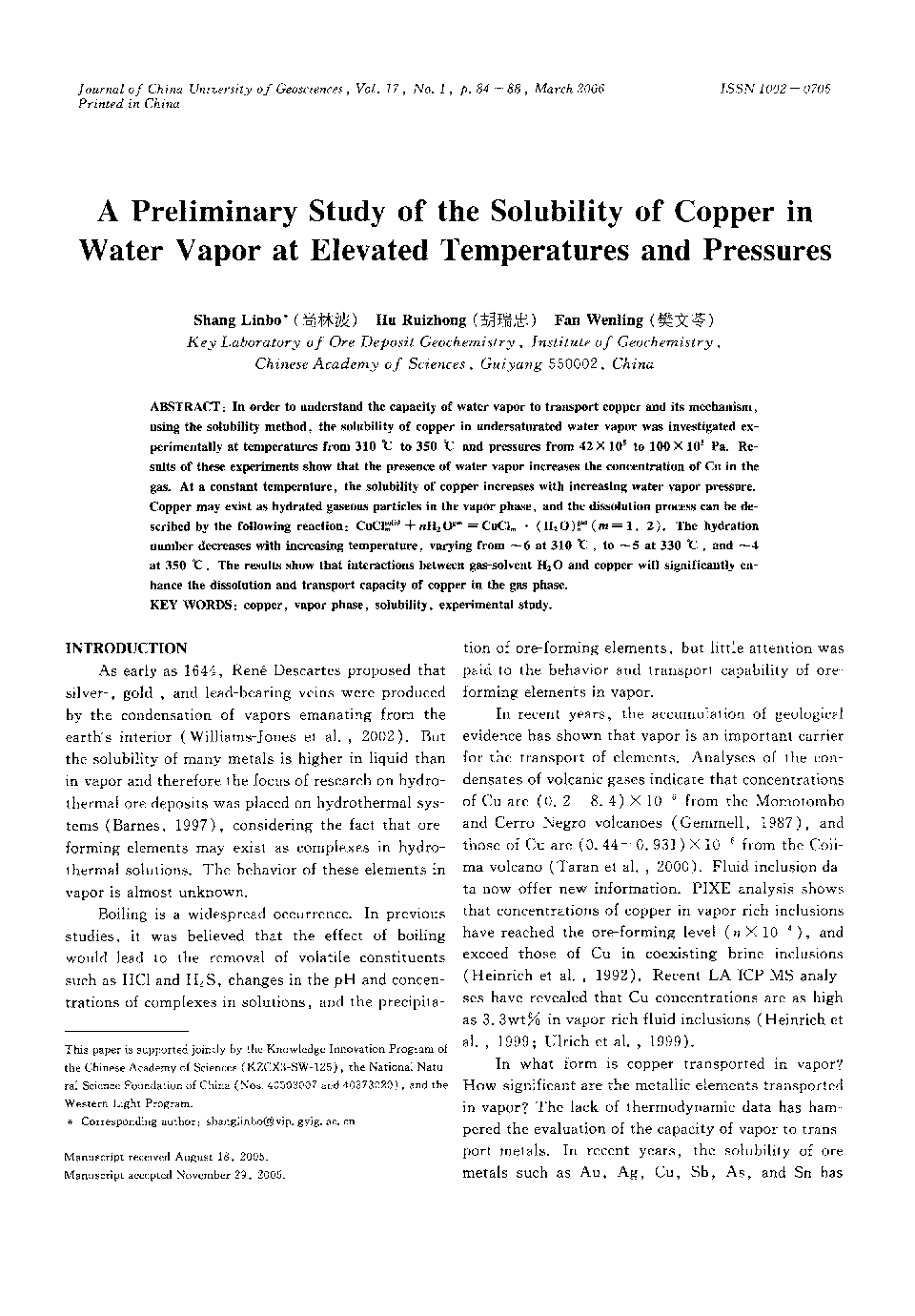| Article ID | Journal | Published Year | Pages | File Type |
|---|---|---|---|---|
| 4687906 | Journal of China University of Geosciences | 2006 | 5 Pages |
Abstract
In order to understand the capacity of water vapor to transport copper and its mechanism, using the solubility method, the solubility of copper in undersaturated water vapor was investigated experimentally at temperatures from 310°C to 350°C and pressures from 42Ã105 to 100Ã105 Pa. Results of these experiments show that the presence of water vapor increases the concentration of Cu in the gas. At a constant temperature, the solubility of copper increases with increasing water vapor pressure. Copper may exist as hydrated gaseous particles in the vapor phase, and the dissolution process can be described by the following reaction: CuClmsolid + nH2Ogas = CuClm · (H2O)ngas (m = 1, 2). The hydration number decreases with increasing temperature, varying from â¼6 at 310°C, to â¼5 at 330°C, and â¼4 at 350°C. The results show that interactions between gas-solvent H2O and copper will significantly enhance the dissolution and transport capacity of copper in the gas phase.
Related Topics
Physical Sciences and Engineering
Earth and Planetary Sciences
Earth-Surface Processes
Authors
Shang Linbo, Hu Ruizhong, Fan Wenling,
